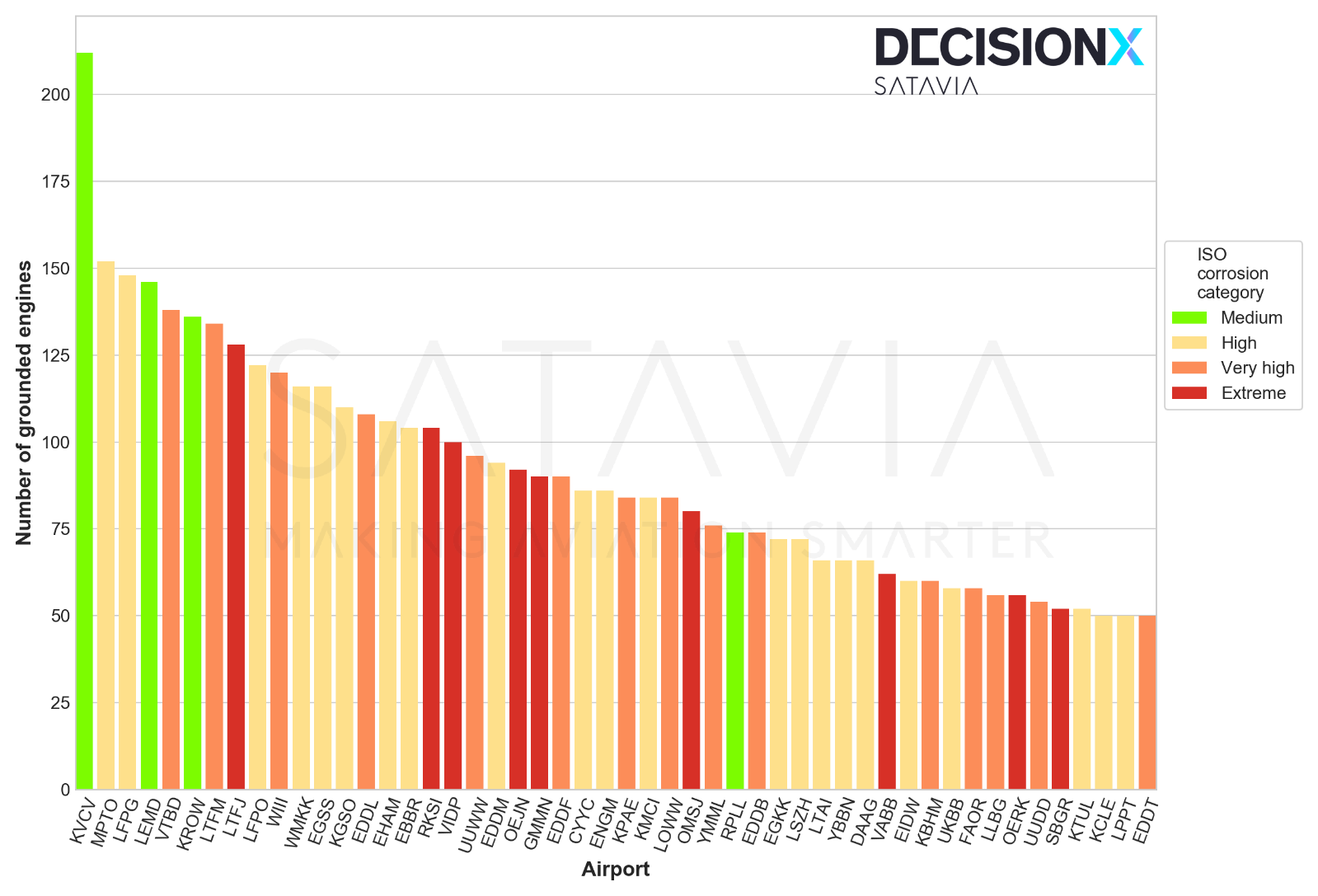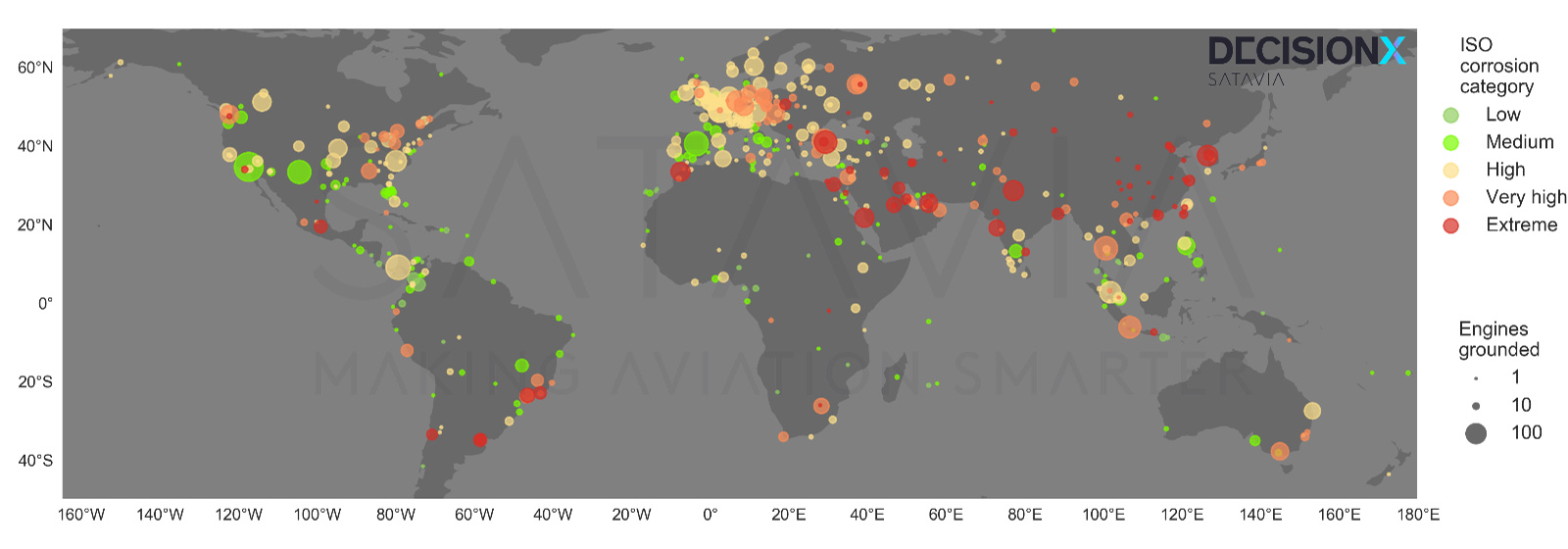Parked aircraft due to COVID-19: Initial observations
Problem statement
Flight restrictions and reduced passenger demand due to the ongoing Covid-19 pandemic has meant airlines around the world are grounding large numbers of aircraft. These aircraft are being left for a prolonged period subject to potentially damaging environmental conditions. Whilst grounding locations are often chosen to minimise damage, this is not always possible. Environmental damage such as corrosion sustained whilst grounded means the aircraft are likely to require additional maintenance before being brought back into service. Planning for this return to service will be a major problem for airlines and MROs, particularly with nearly two thirds of the global fleet currently grounded and much uncertainty around when and to what level service will return in different regions.
Solution statement
SATAVIA is tracking 20,000 active aircraft using terrestrial- and satellite-based ADS-B messages. Noisy data is cleaned giving precise numbers of flights with accurately inferred origin and destination information. Through this analysis we can construct a picture of global and regional flight numbers to help inform where service is resuming. We are also able to identify the location of grounded aircraft and couple this with our contaminant dataset to provide environmental risk assessments. As well as contaminant levels, corrosion risk factors are calculated to identify where aircraft are most at risk of sustaining damage whilst grounded.
MROs can use this information to prioritise maintenance requirements and help plan for required maintenance. Airlines could potentially reposition aircraft at high risk. Early notification of flights resuming could assist with scheduling the maintenance and re-certification required for return to service.
Case study
As a case study we tracked the global fleet of commercial aircraft using the CFM International CFM56 engines. Since the beginning of February, we have identified 22,000 engines in service, with 11,000 of those now grounded across 600 locations worldwide. Flight hour analysis shows significantly reduced activity but with some regions beginning to recover – in China for example. For the 600 airports at which aircraft are grounded we performed a corrosion risk assessment showing which aircraft are most at risk. This information could help inform maintenance schedules and planning for return to service.



